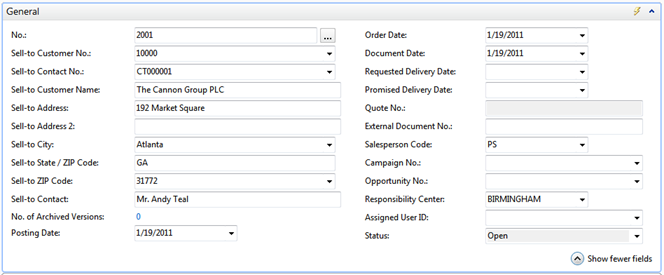Microsoft Dynamics NAV Role Tailored Client changed the Tab Landscape. In the Classic client, we had the more traditional Tabs:

When you click on a Tab, one set of fields and captions disappeared, and another group of fields and captions took their place.
In the RTC, we have the FastTab headers:

Other than the obvious Horizontal to Vertical shift, they still provide the same idea: as the user, you can hide/show fields and captions. But, there are some advantages to the new style:
- You can have multiple FastTabs expanded at one time
- FastTabs have room to support Promoted fields showing up right in the bar (more on that in a moment)
- FastTabs can be customized per user or per profile, down to the field level or at the whole Tab level (more on that in a later post)
All fields on a FastTab get assigned an Importance by default. Users or system administrators can customize that importance for your environment.
Importance: Standard
By default, most fields are set to an Importance of Standard. When the FastTab is Collapsed, you won’t see any trace of it. When the FastTab is Expanded, you’ll see it without any extra steps.
The Home Page field in our example above is a Standard Importance Field.
Importance: Promoted
Some fields are very useful to be able to see whether the FastTab is expanded or collapsed. For example, on the Purchase Invoice, you’ll find both the Payment Terms and Due Date fields on the Invoicing FastTab are Promoted. This ensures that the user can see the Payment Terms and Due Date, even with the Invoicing FastTab collapsed (its default status). When you mouse over a Promoted field’s value, the ToolTip will show which Promoted field is involved:

Importance: Additional
When a field is set to Additional, it will not be displayed until explicitly shown. You’ll know if a FastTab has Additional fields, as you’ll see a Show More Fields option, like on this Sales Order Page:

When the Show More Fields button is selected, we’ll see a much different FastTab:

